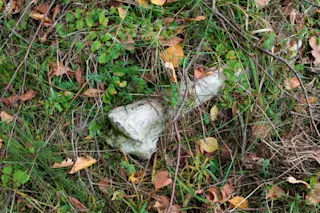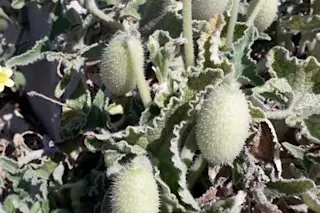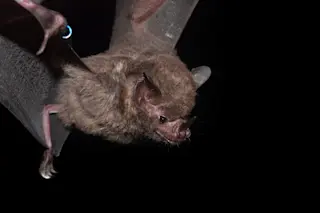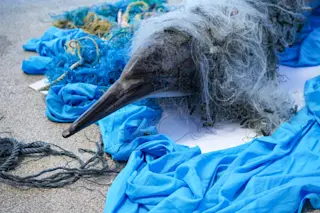
Pretty blossoms aren't immune to the body-morphing, plague-spreading powers of a good microbe. Some of the flowers you admire on a spring day might only be blooming, for example, because they're hostages of a disease. Plant diseases can't scatter in sneeze droplets like a human virus can. But they can change the look and behavior of their hosts to make sure they travel as widely—and dangerously—as possible. 1. Replacing pollen with disease bombs In a new review of flower diseases (title: "Arranging the bouquet of disease"), Scott McArt of the University of Massachusetts at Amherst and his colleagues examined the ways that infectious microbes can alter their host plants. One such microbe is a fungus called Microbotryum violaceum, which infects plants in the carnation family. Plants are infected with the fungus when pollinating insects visit, carrying spores another infected plant has dusted onto their bodies. The fungus burrows down into the new plant, finds the site of developing pollen, and destroys it. Then it replaces the flower's packets of pollen with its own spores.2. Growing fake flowers Another fungus, called "mummyberry," infects blueberry plants and turns their fruits into pale, shriveled carcasses. But it doesn't stop there. Infected shoots of the plant grow grayish spots at their tips that reflect UV light, smell like flowers, and leak sugary liquid. Pollinators that are attracted to these "pseudoflowers" will pick up more infectious spores on their bodies. 3. Impersonating a neighbor When yet another fungus infects Drummond's rockcress, a North American wildflower, that plant produces pseudoflowers too. But instead of "blooming" when a healthy plant's flowers do, these pseudoflowers emerge at the same time that a similar-looking ranunculus species blooms. Infected rockcress plants that are growing close to ranunculus flowers receive more visits from pollinating insects—which add up to more opportunities for the disease to spread. 4. Luring bees and birds with sweets Plants that are weakened by fighting a disease sometimes produce smaller flowers and less nectar than usual. But several kinds of fungus can make plants grow pseudoflowers that have lots of artificial nectar, tempting their pollinators. Once an insect visitor arrives, it will find that this sugary liquid is spread over the surface of the pseudoflower, instead of concentrated in one spot like a real flower's nectar. This means the insect has to crawl all over the place to get its reward—staying in contact with the pseudoflower for even longer. These false flowers may smell like their host's real flowers. They may even mimic the smell of insect pheromones. Hitching a ride to a new host is how a disease survives, so attracting insects (and getting them to linger) is crucial to the fungus. 5. Forcing a host to stay open all the time When the fungus M. violaceum infects Viscaria vulgaris, the sticky catchfly (pictured above), the plant's flowers open earlier than usual and stay open for longer. This attracts extra pollinating insects, which then carry the disease away and spread it elsewhere. (Later in the flowering season, when insects are more experienced, they seem to avoid infected blooms.) In a Mexican flowering shrub called Moussonia deppeana, infection by another fungus makes flowers stay open for two days longer than healthy flowers. This leads to increased visits from that flower's pollinators, hummingbirds. In general, the authors write, infections make plants produce more flowers. But plants have ways of fighting back. Reducing the size and scent of their flowers can lower their odds of infection. So can growing smaller, less attention-grabbing blooms. Of course, shrinking flowers too much would keep a plant from getting pollinated at all. So blossoms must strike a balance: attracting the attention of their pollinators while avoiding attention that will kill them.
Image: Viscaria vulgaris by Kurt Stüber (via Wikipedia)
McArt SH, Koch H, Irwin RE, & Adler LS (2014). Arranging the bouquet of disease: floral traits and the transmission of plant and animal pathogens. Ecology letters PMID: 24528408













